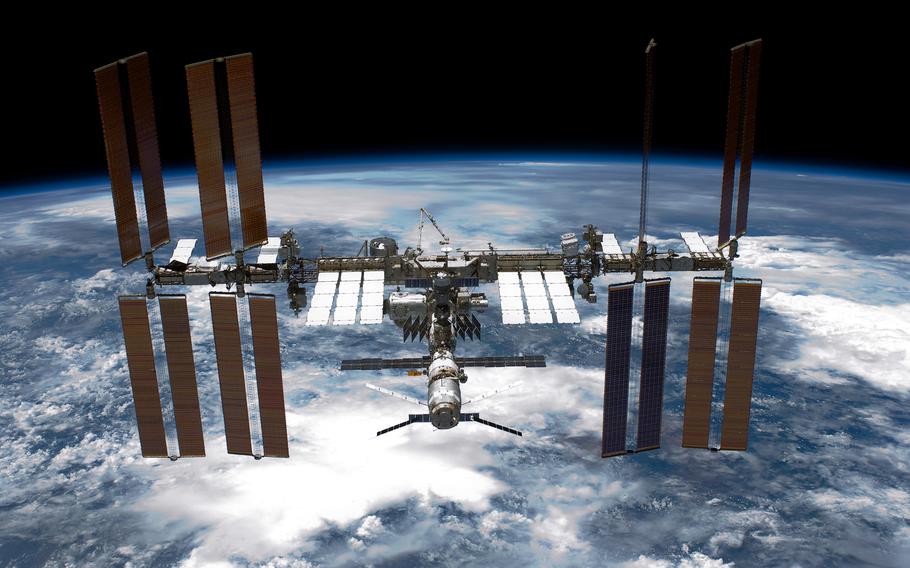
In this handout provided by the National Aeronautics and Space Administration (NASA), the International Space Station (ISS) is seen from NASA space shuttle Endeavour on May 29, 2011, in space. (NASA)
(Tribune News Service) — As they do on Earth, China and Russia pose the biggest threat to U.S. national security interests in space, according to a new report issued Tuesday by the Defense Intelligence Agency.
The report, “Challenges to Security in Space,” notes that China and Russia have increased their space assets by nearly 70 percent over the past two years. This follows a period between 2015 and 2018 when their inventories doubled.
“The drive to modernize and increase capabilities for both countries is reflected in nearly all major space categories — satellite communications, remote sensing, navigation-related, and science and technology demonstration,” the unclassified report notes.
Both countries are embracing a two-pronged approach, according to the report: bolster their own space capabilities while also improving their ability to thwart U.S. efforts.
Space race
Last July, China successfully tested an intercontinental ballistic missile with a hypersonic glide vehicle that circled the globe in a fractional orbit.
“This demonstrated the greatest distance flown (~40,000 kilometers) and longest flight time (~100+ minutes) of any Chinese land attack weapons system to date,” the report observes.
In November 2021, Russia conducted an anti-satellite missile test, destroying one of its own obsolete satellites.
While both China and Russia, unlike the United States, have space programs that draw little distinction between military and civilian efforts, they have taken slightly different approaches to using space to improve their combat effectiveness, said Kevin Ryder, DIA’s senior defense intelligence analyst for space and counterspace.
“China, due to more economic advantages, has increased their capabilities and put more financial and military effort toward developing new and better capabilities,” he said. “Russia, on the other hand, is more streamlined due to other military modernization efforts.”
And Chinese and Russian ambitions don’t end with Earth’s orbit. Both have planned missions to the moon, where they might exploit its extensive natural resources, the report notes. Within 30 years, the Chinese have plans for a research base on the moon capable of supporting human visits, according to the report.
___
©2022 CQ-Roll Call, Inc., All Rights Reserved.
Visit cqrollcall.com.
Distributed by Tribune Content Agency, LLC.